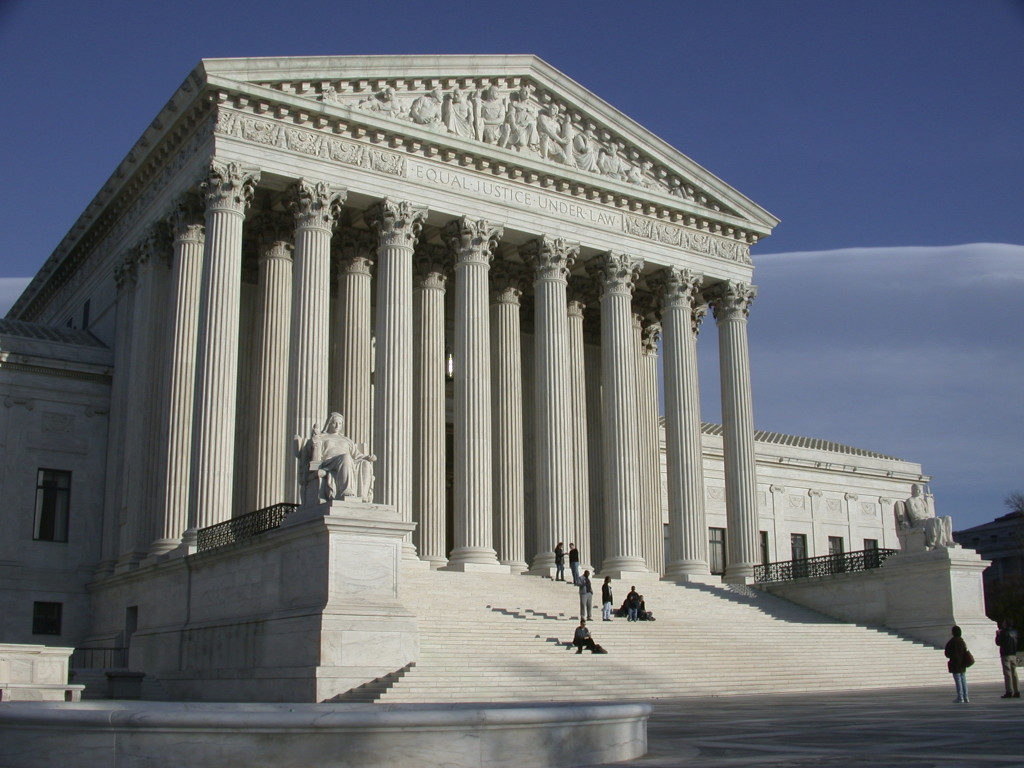In 1984, the Supreme Court handed down a decision that would fundamentally change the balance of power in American government by the Court giving wide deference to regulatory agencies in the interpretation of ambiguous statutes. In Chevron v. NRDC, the Court prescribed guidelines for administrative interpretation regarding vague or ambiguous statutes. The opinion states:
When a court reviews an agency’s construction of the statute which it administers, it is confronted with two questions. First, always, is the question whether Congress has directly spoken to the precise question at issue. If the intent of Congress is clear, that is the end of the matter; for the court, as well as the agency, must give effect to the unambiguously expressed intent of Congress. If, however, the court determines Congress has not directly addressed the precise question at issue, the court does not simply impose its own construction on the statute, as would be necessary in the absence of an administrative interpretation. Rather, if the statute is silent or ambiguous with respect to the specific issue, the question for the court is whether the agency’s answer is based on a permissible construction of the statute.
The power of an administrative agency to administer a congressionally created . . . program necessarily requires the formulation of policy and the making of rules to fill any gap left, implicitly or explicitly, by Congress.
This edict is known as “Chevron deference.” Essentially, the Court decided that executive agencies have the power to interpret ambiguous statutes and that courts should defer to agency evaluation. In the decades since, Chevron deference has become a hallmark of administrative rulemaking and a crucial tool in implementing top down policy agendas, particularly in the energy and environment space.
Fundamentally, Chevron deference raises serious separation-of-powers questions, as Justice Thomas noted in a recent concurrence in last year’s Michigan v. EPA decision. “Chevron deference precludes judges from exercising that judgment [to interpret federal statutes], forcing them to abandon what they believe is ‘the best reading of an ambiguous statute’ in favor of an agency’s construction. It thus wrests from the Courts the ultimate interpretive authority to ‘say what the law is,’ and hands it over to the Executive.”
This delegation of power has permitted federal agencies to use Chevron to justify an ever-expanding interpretation of its regulatory powers. Justice Thomas’ Michigan concurrence again captures the need for reform: “Although we hold today that EPA exceeded even the extremely permissive limits on agency power set by our precedents, we should be alarmed that it felt sufficiently emboldened by those precedents to make the bid for deference that it did here.” Thomas was referring to the EPA’s claim that imposing billions of dollars in economic costs in return for a few dollars in health or environmental benefits was somehow rational and appropriate under the statute. The Court disagreed.
Yet the EPA continues forward on its crusade against affordable, reliable energy. The Clean Power Plan is perhaps the agency’s most expansive power grab under the auspice of Chevron deference. In that regulation, the EPA has re-interpreted its ability to impose a “system of emission reduction” to extend beyond the traditional “source,” or power plant. Their new interpretation would allow them to regulate the entire electricity grid as one “system.” Legal challenges to the rule are numerous and involve several claims of Chevron deference by EPA.
By manipulating vast and complicated statutes such as the Clean Air Act and Clean Water Act, agencies have imposed their will on countless issues ranging from ozone emissions to water regulations to energy tax credits. Through it all, Congress has been mostly helpless in pushing back.
Fortunately, Rep. Ratcliffe (TX-4) has introduced the Separation of Powers Restoration Act, H.R. 4768, in an effort to fight against continued executive branch overreach. Simply, the bills change a mere eight words of U.S. Code (section 706 of title 5), changing “all relevant questions of law, interpret constitutional and statutory provisions” to “de novo all relevant questions of law, including the interpretation of constitutional and statutory provisions and rules.” This means that courts must evaluate issues surrounding agency interpretation on their own basis, not according to how an agency views a statute.
Rep. Ratcliffe’s bill, as well as the Senate companion S. 2724, chip away at the executive branch’s skewed power in cases of statutory interpretation. By requiring courts to assess cases de novo, agencies can no longer claim deference and interpret vague language to fit their political agenda. This strikes a balance of power between the branches and marks a crucial step in halting the continuous onslaught of executive overreach in all policy areas, including the energy and environment sector.
The Separation of Powers Restoration Act is a long overdue policy initiative. In order to promote good governance, executive branch agencies must be held in check. This bill does just that. All Members of Congress should support this legislation as a necessary path towards a balance of of powers and the promotion of constitutional values.
